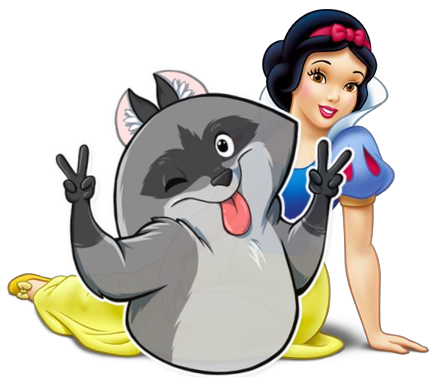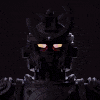Пока сложно... Понимаю. Дело давнее. Так как время от времени пишу статьи для википедии а там очень щепетильно относятся к плагиату в том числе и самоплагиату то приведу фрагмент статьи на тамошнем языке и напомню вопрос о какой анимации идёт речь
By 1907, the 50-year-old Émile Cohl, like everyone else in Paris, had become aware of motion pictures. How he actually entered the business is shrouded in legend. According to Jean-Georges Auriol in a book published in 1930, one day Cohl was walking down the street when he spotted a poster advertising a movie obviously stolen from one of his strips. Outraged, he confronted the manager of the offending studio (Gaumont) and was hired on the spot as a scenarist (responsible for one-page story ideas for movies). The story is rather doubtful in the detail of which strip and which short film; it is also possible that the story is completely false, and that Cohl was approached for the job, either by director Etienne Arnaud or by artistic director Louis Feuillade, both of whom had once worked for caricature papers and therefore could be expected to know Cohl by reputation, if not personally.
At Gaumont, Cohl collaborated with the other directors whenever possible, learning cinematography from Arnaud and directing chases, comedies, féeries ("fairy pieces"), and pageants. But his specialty was animation. He worked in a corner of the studio with a vertically mounted Gaumont camera and a single assistant to operate it. He turned out four sequences a month for insertion in mostly live action films. Studio director Léon Gaumont, in one of his visits, dubbed him "the Benedictine".
The idea for doing animation was born from the huge success of the film The Haunted Hotel, released by Vitagraph and directed by J. Stuart Blackton. It premiered in Paris in April 1907 and there was immediately a demand for more films using its incredible object animation techniques. According to a story told by Arnaud in 1922, Gaumont had ordered his staff to figure out the "mystery of 'The Haunted Hotel'." Cohl studied the film frame by frame, and in this way discovered the techniques of animation. Cohl, who was always seeking to enlarge his reputation in later life, never corroborated this story. Also, there were a fair number of films released before 1907 with stop-motion and/or drawn animation in them, by Blackton and others, any one of which could have taught Cohl animation, if he didn't just work the technique out on his own. The main reason The Haunted Hotel is significant is the fact that it was popular enough to make the arduous work of animation profitable.
Cohl made Fantasmagorie from February to May or June 1908. This is considered the first fully animated film. It was made up of 700 drawings, each of which was double-exposed (animated "on twos"), leading to a running time of almost two minutes. Despite the short running time, the piece was packed with material devised in a "stream of consciousness" style. It borrowed from Blackton in using a "chalk-line effect" (filming black lines on white paper, then reversing the negative to make it look like white chalk on a black chalkboard), having the main character drawn by the artist's hand on camera, and the main characters of a clown and a gentleman (this taken from Blackton's Humorous Phases of Funny Faces). The film, in all of its wild transformations, is a direct tribute to the by-then forgotten Incoherent movement. The title is a reference to the "fantasmograph", a mid-Nineteenth Century variant of the magic lantern that projected ghostly images that floated across the walls.
Fantasmagorie was released on 17 August 1908. This was followed by two more films, Le Cauchemar du fantoche ["The Puppet's Nightmare"] and Un Drame chez les fantoches ["A Puppet Drama", called The Love Affair in Toyland for American release and Mystical Love-Making for British release], all completed in 1908. These three films are united by their chalk-line style, the stick-figure clown protagonists, and the constant transformations. Cohl made the plots of these films up as he was filming them. He would put a drawing on the lightbox, photograph it, trace onto next sheet with slight changes, photograph that, and so on. This meant that the pictures did not jitter and the plot was spontaneous. Cohl had to calculate the timing in advance. The process was demanding and time-consuming, which is probably why he moved away from drawn animation after Un Drame chez les fantoches.
The rest of the films Cohl made for Gaumont involve strange transformations (Les Joyeux Microbes [The Joyous Microbes, aka The Merry Microbes (UK)] (1909)), some great matte effects (Clair de lune espagno [Spanish Moonlight, aka The Man in the Moon (US), aka The Moon-Struck Matador (UK)] (1909)), and loving puppet animation (Le Tout Petit Faust [The Little Faust, aka The Beautiful Margaret (US)] (1910)). Other films used jointed cut-outs or animated matches (the later an especial favorite of Cohl's).
In his lifetime, Cohl's most famous film was Le Peintre néo-impressionniste ["The Neo-Impressionistic Painter"], made in 1910. An artist is sketching a classically draped model holding a broom as a stick-figure when a collector storms in demanding to know the progress of his work. The artist shows the collector a series of blank colored canvases (the film is color-tinted). As he gives their ridiculous titles, the collector imagines them being drawn on the canvas. For example, the red canvas is A cardinal eating lobster with tomatoes by the banks of the Red Sea. The collector is soon so delirious that he buys every blank canvas he can see. Quite obviously, the artist is not a neo-Impressionist (the name taken from the latest vogue in Paris)--he's an Incoherent.
The Cohl animated films had a large impact through their American distribution by Kleine. Many of them received rave reviews in the trade magazines, although Cohl was identified only as "Gaumont's animator". It was probably in response to Fantasmagorie that Winsor McCay made Little Nemo (1911). Motifs of Cohl's can be found in Little Nemo and later films by McCay: the dots coalescing into Little Nemo reflect effects in Un Drame Chez les Fantoches and Les Joyeux Microbes; the metamorphosis of the rose into the Princess may have been inspired by Fantasmagorie; the titular character of The Story of a Mosquito (1912) sharpening his beak comes from Un Drame Chez les Fantoches; the live-action/animation interaction of McCay throwing a pumpkin to Gertie the Dinosaur (1914) may have been an answer to the matador hurling his hatchet at the moon in Clair de lune espagnol. But if there were borrowings of Cohl by McCay, there was also a wealth of style and spirit in McCay's films that were uniquely his own.
On 30 November 1910, Cohl left Gaumont for Pathé, probably for more money. He made only two animated films before being forced into exclusively live-action work as a director of burlesques starring Jobard (Lucien Cazalis), one of the first generation of great screen comics. Cohl made ten Jobard films between March and May 1911 before leaving for a vacation. Apparently, one of these films was the origin of pixilation, the technique of applying stop-motion to human beings.
One of those two animated films was Le Ratapeur de cervelles ["Brains Repaired"], which is a rehash of Les Joyeux Microbes using a mental disease. The transformations here are some of the most remarkable (and non-sensical) of Cohl's career: as two men shake hands in profile, their heads expand into huge crossed bird beaks, filling the screen in a zoom until only their shared eye is seen, which itself expands into a bellows. The other film, La Revanche des esprits [The Spirit's Revenge] (now lost), may have been the first film to combine live-action and animation by drawing directly on the live-action film (previous work had used mattes exclusively).
In September 1911, Émile Cohl learned that his daughter Andrée had died of a miscarriage. Dissatisfied with Pathé and too proud to return to Gaumont, Cohl signed with Eclipse in September. Only two of Cohl's Eclipse films have survived; one of them, Les Exploits de Feu Follet (a.k.a. The Nipper's Transformations), is currently seen as the first Western animation film which was shown for certain in a Japanese cinema (on 15 April 1912).[2] The Eclipse contract was not exclusive, so Cohl made films for other studios. One of these films, Campbell Soups, was his first film made for Éclair, the number three studio in France.
At the beginning of the 20th century, many early film studios in America's first motion picture industry were based in Fort Lee, New Jersey.[3][4][5] Éclair's American studio was run by Cohl's friend Arnaud. As Éclair was moving into comedies for American audiences, it was not too hard for Arnaud to have his friend sent over the Atlantic to join him. Cohl, his wife Suzanne, and their son André sailed first class from Le Havre to New York City. At Ellis Island, he was required, for "sanitary reasons", to shave off the mustache he had worn for thirty years in honour of André Gill.
Despite the inevitable xenophobia from the locals, the French colony at Fort Lee was enthusiastic about having finally invaded the coveted American market. Cohl bought a house and settled into a typical middle-class American lifestyle. He had a considerable advantage over fellow-Éclair employees, as he was fluent in English.
Cohl had two basic assignments at Fort Lee: humorous newsreel inserts and The Newlyweds animated series. The newsreel (one of the first of its kind) was started by the Sales Company in March 1912 and continued by Universal (Éclair's distributor). The Newlyweds started life as a newspaper comic strip by George McManus in the New York ''World''. The three main characters are a fashionable woman drawn in the style of the "Gibson Girl", her obliging husband, and Baby Snookums, an absolute hellion of a child who nevertheless gets everything he wants (usually at the expense of the father). The series was popular both in the United States and in France (under the name Le Petit Ange). Cohl wanted to make the first animated series, and he liked The Newlyweds. As for McManus, he may have been convinced to sign with Cohl at the urging of his friend Winsor McCay. Prior to this point, there had been a few adaptations of comic series into films, but they were all live action. Examples include Happy Hooligan (starring J. Stuart Blackton as the title character), Buster Brown, and Mutt and Jeff (later to become a successful animated series).
Cohl began work on The Newlyweds series in November 1912, and the films began appearing in theaters in March 1913.[6] The ads for the Newlyweds films are the oldest on record to use the phrase "animated cartoons"; as would be usual for all of the following comic adaptations, only the comic artist is mentioned in the advertising, never the animator. Cohl achieved his speed (13 Newlyweds cartoons in 13 months) by using the bare minimum of actual animation, the scenes consisting of static tableau with dialog balloons appearing above each character's head (done faithfully in the McManus style). What little motion necessary was done with hinged cut-out figures animated by stop-motion. The only ingenuity in these films lay in the transitions between tableaux, which utilised Cohl's trademark transformations. Nevertheless, Cohl had proved that commercial animation was possible. The series was an instant hit. Only one film in this series has survived, "He Poses for His Portrait" [aka "Le Portrait de Zozor" (Fr.)] (1913).
The success of the series led to an explosion of animation, all adaptations of newspaper comic strips, and few of them remembered today. Meanwhile, Cohl saw both The Story of a Mosquito and Gertie the Dinosaur live at the Hammerstein Theater in New York, and he recorded his admiration of each in his diary. For animation to be practical, it had to move beyond the techniques of Cohl (cut-outs) and McCay (tracing), both of which were arduous, single-person processes. Two men were to independently work out ways around this problem: Raoul Barré and John Randolph Bray. Barré studied art in Paris in the 1890s and was known for his pro-Dreyfus cartoons. In 1920, Cohl told the story of two unnamed visitors that Éclair had forced on him to study his techniques, techniques that they later stole to make their own series. It is possible that these two were Barré and his business partner William C. Nolan. It is possible that Cohl's obvious hostility to his visitors was the result of the knowledge that they were on opposite sides in the Dreyfus Affair. On the other hand, Barré's method for making cartoons quickly, the "slash system", is the exact opposite of Cohl's cut-out system. It is true that Barré's series, The Animated Grouch Chasers, frequently stole characters and scenarios from Cohl, but then again everyone was doing that. John Randolph Bray, in collaboration with Earl Hurd, developed the patents that nearly made them the Motion Picture Patents Company of animated film. Animation historian Michael Barrier speculates that one of Cohl's unnamed visitors may have been Bray instead of Barré.

![]()
![]()
![]()
![]()








































































































































